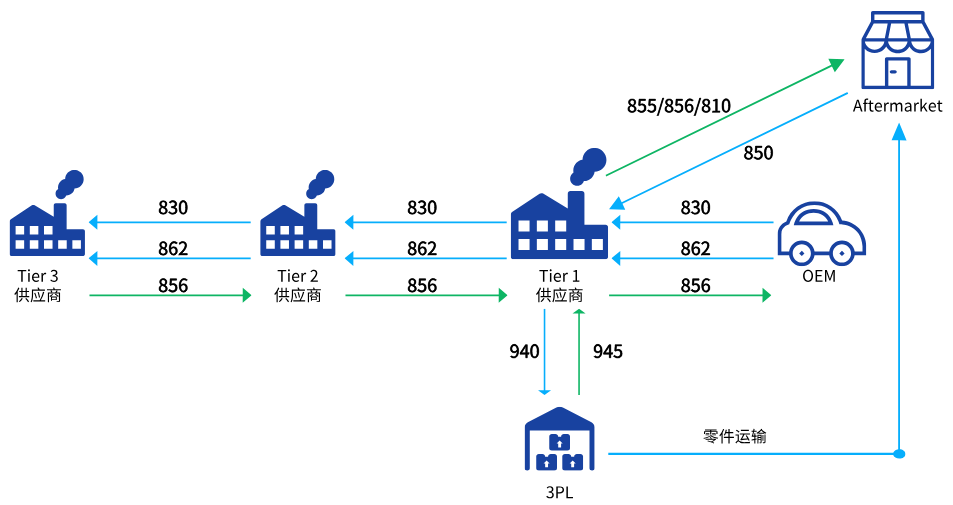前言
在程序设计中,使用抽象类还是用接口应该是一个需要考虑的场景,有时我们感觉这两者并没有太大的区别,有时又有很大区别。这里是一些说明和示例。
一、抽象类和接口
1、相同点:
1)都可以被继承
2)都不能被实例化
3)都可以包含方法声明
4)派生类必须实现未实现的方法
2、区别
1)抽象基类可以定义字段、属性、方法实现。接口只能定义属性、索引器、事件、和方法声明,不能包含字段。
2)抽象类是一个不完整的类,需要进一步细化,而接口是一个行为规范。微软的自定义接口总是后带able字段,证明其是表述一类“我能做……”
3)接口可以被多重实现,抽象类只能被单一继承
4)抽象类更多的是定义在一系列紧密相关的类间,而接口大多数是关系疏松但都实现某一功能的类中。
5)抽象类是从一系列相关对象中抽象出来的概念,因此反映的是事物的内部共性;接口是为了满足外部调用定义的一个功能约定,因此反映的是事物的外部特性
6)接口基本上不具备继承的任何具体特点,它仅仅承诺了能够调用的方法。
7)接口可以用于支持回调,而继承并不具备这个特点。
8)抽象类实现的具体方法默认为虚的,但实现接口的类中的接口方法却默认为非虚的,当然您也可以声明为虚的。
9)如果抽象类实现接口,则可以把接口中方法映射到抽象类中作为 抽象方法而不必实现,而在抽象类的子类中实现接口中方法。
3、使用规则
1)抽象类主要用于关系密切的对象,而接口最适合为不相关的类提供通用功能。
2)如果要设计大的功能单元,则使用抽象类;如果要设计小而简练的功能块,则使用接口。
3)如果预计要创建组件的多个版本,则创建抽象类。接口一旦创建就不能更改。如果需要接口的新版本,必须创建一个全新的接口。
4)如果创建的功能将在大范围的全异对象间使用,则使用接口;如果要在组件的所有实现间提供通用的已实现功能,则使用抽象类。
5)分析对象,提炼内部共性形成抽象类,用心表示对象本质,即“是什么”。为外部提供调用或功能需要扩充时优先使用接口。
6)好的接口定义应该是具有专一功能性的,而不是多功能的,否则生成接口污染。如果一个类只是实现了这个接口中一个功能,而不得不去实现接口中的其他方法,就叫接口在污染。
7)尽量避免使用继承来实现组建功能,而是使用黑箱复用,即对象组合。因为继承的层次增多,造成最直接的后果就是当调用这个类群中某一类,就必须把他们全部加载到栈中!后果可想而知
(结合堆栈原理理解)。微软在构建一个类时,很多时候用到了对象组合的方法。
二、代码示例
public delegate void EnableHadler(object sender, EventArgs e);
public delegate void CPU_CallBack(CPU cpu);
public interface I9_Cpu_Interface
{
void FCLGA1700();
bool Enable
{
get;
}
int this[int index]
{
get;
}
event EventHandler EnableFCLGA1700;
}
public abstract class CPU : I9_Cpu_Interface
{
public event EventHandler EnableFCLGA1700;
int[] pins;
string _name;
double _frequency;
int _kernel;
int _pinNum;
bool _isEnableFCLGA1700;
public CPU(string name, double frequency, int kernel, int pin, bool isEnableFCLGA1700)
{
_name = name;
_frequency = frequency;
_kernel = kernel;
_pinNum = pin;
pins = new int[pin];
_isEnableFCLGA1700 = isEnableFCLGA1700;
EnableFCLGA1700 += new EventHandler(CPU_EnableFCLGA1700);
}
void CPU_EnableFCLGA1700(object sender, EventArgs e)
{
Console.WriteLine("我支持FCLGA1700");
}
public string Name => _name;
public double Frequency => _frequency;
public int Kernel => _kernel;
public int PinNum => _pinNum;
protected abstract void ProwerOn();
protected abstract void SelfCheck();
public override string ToString()
{
return string.Format("我是{0} CPU,我的主频是{1:0.0},我有{2}个内核,我的引脚有{3}个", _name, _frequency, _kernel, _pinNum);
}
public int this[int index]
{
get
{
if (index<pins.Length)
{
return pins[index];
}
return -1;
}
}
public bool Enable {
get
{
if (_isEnableFCLGA1700)
{
EnableFCLGA1700.Invoke(this, null);
}
return _isEnableFCLGA1700;
}
}
public void FCLGA1700()
{
Console.WriteLine("1、处理器最高可达二十四核。");
Console.WriteLine("2、支持双通道DDR4或DDR5内存。");
Console.WriteLine("3、支持PCI-E 5.0规范。");
Console.WriteLine("4、芯片组使用单芯片设计,支持两个SATA 3Gbps和多达十个SATA/SAS 6Gbps接口。");
}
}
public class i7_13900K : CPU
{
public i7_13900K()
:base("i7_13900K", 5.8,16,1700,true)
{
Console.WriteLine(base.ToString());
ProwerOn();
SelfCheck();
}
protected override void ProwerOn()
{
Console.WriteLine("i7_13900K 上电完成");
}
protected override void SelfCheck()
{
Console.WriteLine("i7_13900K 自检完成");
}
}
public class i7_14900K : CPU
{
public i7_14900K()
: base("i7- 14900K", 6.0, 16, 1700, true)
{
Console.WriteLine(base.ToString());
ProwerOn();
SelfCheck();
}
protected override void ProwerOn()
{
Console.WriteLine("i7-14900K 上电完成");
}
protected override void SelfCheck()
{
Console.WriteLine("i7-14900K 自检完成");
}
}
public class CreateCPU
{
CPU_CallBack callBack;
CPU _cpu = null;
public CreateCPU(CPU cpu)
{
_cpu = cpu;
callBack = new CPU_CallBack(cpu_call_balc);
}
void cpu_call_balc(CPU u)
{
if (u.Enable)
{
u.FCLGA1700();
}
}
public void ShowMessage()
{
callBack.Invoke(_cpu);
}
}
static void Main(string[] args)
{
CreateCPU createI7_13900k = new CreateCPU(new i7_13900K());
createI7_13900k.ShowMessage();
Console.WriteLine();
CreateCPU createI7_14900k = new CreateCPU(new i7_14900K());
createI7_14900k.ShowMessage();
Console.Read();
}三、效果




















